The Lenovo ThinkStation P900 Workstation Review: Design 101
by Ian Cutress on May 6, 2015 7:00 AM ESTVisual Inspection
The base system is just over two-feet long at 24.4 inches, while being 17.5-in high and 7.87-in wide. Moving outside ecosystems where 1.5 liter chassis exist, the 55 liter workstation is a behemoth by comparison. 7.87 inches high converts to 4.5U for racks, perhaps indicating at what level Lenovo is positioning the P900. Carrying our workstation sample, even with only an M.2 SSD and one GPU was still an effort, with the chassis being made from a combination of steel for strength and aluminum for looks.
Opening the side panel via the latch shows of the internals. Similar to when we saw the initial renders of the P900, we get the three level split airflow in order to keep the system cool. For the top and bottom, air comes in the front via the fans in the middle of the case, over the storage drives, and out the rear past the PCIe coprocessors. In the middle, the CPUs use a rear case fan to draw air in, split the airflow independently across the CPUs and DRAM, and then out the front of the case around the sides of the ODD bays.
The air baffle for the CPUs is easy to take out via the handle provided.
On the side of the handle, here shows the split for the top and bottom, with the air from the top going to the furthest CPU from the rear of the case.
It is a little difficult to characterize in pictures, but the principle is sound.
For the central airflow, where the air from the CPUs moves around the ODD bays, we have the required space:
With the baffle removed the custom motherboard shows both CPUs in a linear design with four banks of DDR4 either side of each socket. Normally we see CPUs staggered to aid in design of the motherboard, but this application suits the Lenovo airflow management.
Each CPU is served by a six-phase server-grade power design to ensure efficiency and longevity. These are Cooper-Bussmann chokes, similar to those used on some of the consumer grade motherboards tested which focus on server-level longevity. As there is no overclocking on this platform, there is little need to over-engineer this aspect of the design. There’s a hint of cable management coming through between the sockets due to extra cabling required at the bottom of the motherboard. Lenovo has this fixed down as to not be effected by other components – the CPU fans are also equipped with fan guards so if the cable does come loose, it doesn’t start grating against the fan blades.
Installed in this system is the Quadro K5200 mentioned in the introduction. This is a standard NVIDIA blower design with no backplate and requiring double slot width. This card is using the lower down PCIe slot, but there is space just below the DRAM slots for another. If this was installed in that position, the position of the PCIe cables would affect the FLEX module installed on the right.
The FLEX module sits in a PCIe x8 slot alongside the main PCIe x16 slots, and is designed to be easily removable with the latch next to it. This card is in the right way round, although the server admin will have to remove it to see the bounty underneath:
It splits into two PCIe 3.0 x4 M.2 slots, although Lenovo can provide a range of FLEX modules to suit the customer requirements. To be honest, this is a nice way of putting in storage, especially for OS and fixed drives, into a high end workstation like system.
The drive supplied in our system was the 512GB model of the XP941 from Samsung, rebranded slightly with Lenovo product codes in case of replacement.
Where the FLEX module sits in the motherboard actually covers some of the cabling underneath, but putting the module back into place was easy due to the chassis design.
Next to this is one of the system fans. Rather than be placed right in the front of the chassis blowing air from the front to rear, these sit in the middle between the storage drives and the PCIe coprocessors and can be removed very easily by pulling the handle at the red stripe.
The fans are guarded on the open side and use Lenovo’s interesting fan connector in order to slot in. No screws are required. The fan used here is an AVC DBTA0938B2U, a 92x92x38mm fan which can use a fair amount of power at full load. Even with the side panel off I never heard the fan move above a low hum, even when hammering the system. That being said, this fan has to be able to cope with a fully laden system in a hot climate which might initiate a higher speed profile.
Similarly, the top strip has an identical fan as well as space for another FLEX module.
At the top we find the 1300W power supply, removable in one action by lifting the lever with the red strip.
Before we get to the power supply itself, this is how it connects directly into the system. We have a direct line in on the motherboard which looks like (but isn’t) a PCIe slot as well as a series of headers screwed into the case for external connectors. Through these two inputs/outputs, the system power needs of the components (motherboard, CPUs, drives, PCI coprocessors) are handled.
The connectors on the power supply also look deceptively like a 20+4 pin power connector and a PCIe port.
To the user on the outside it looks very simple, with a single 3-pin lead requirement. The power supply also supports a power self-test mode, presumably indicated by the green and amber lights beside the power socket.
The two fans at the rear of the power supply in the case ensure that airflow is from front to back based on the units orientation.
The sticker on the top indicates that this power supply is a Delta Electronics unit that satisfies the 80 PLUS Platinum standard, giving 90-92-89 percent efficiency at 115V and 90-94-91 percent at 230V (based on 20-50-100 percent loading). Interestingly the way this sticker is written seems that the power supply has a total of nine voltage rails, each limited to 18A.
Moving back inside the case, this is the side fan for the processors that interacts with the air baffle. It is easily removed by pulling on the red strip:
But the reason to take it out is to get a better look at the connector Lenovo is using for these fans.
The standard 4-pin fan header is moved into a bulkier 2x2 arrangement. On the motherboard, this looks like this:
Which is rather bulky and we won’t see it on anything designed to be commercial any time soon. As Lenovo is designing the whole system, they can almost afford to be liberal with PCB area. It is also worth noting that the power delivery cooling heatsink has a small cut-away in order to fit the fan.
The rear fan supplying the processors with cooler air is an AVC DV12038B12M, a 12cm ball bearing design to which there is very little information online.
For the PCIe slots under this fan, Lenovo uses a latch mechanism to keep the PCIe coprocessors in place. Pulling on the red strip opens the part up and the card is easily removed:
Similarly at the top, although only three PCIe slots are present here allowing for a big co-processor and a smaller connectivity card. The PCIe 2.0 x4 slot is open ended, allowing for bigger cards at reduced bandwidth.
On the other side of the chassis are the ODD bays. There are three possible, with one of our sample loaded with a DVD/RW drive. Rather than going for slim bays, these are full on allowing for other devices that require the room. The drives can be removed by pulling on the tag with the red arrow below the drive.
For people who want to add more drives in this area, the SATA ports are found beside the FLEX module on the bottom of the board, though it should be noted that only a few are available:
For storage drives, the P900 chassis comes beautifully equipped on the far right hand side. There is even a handy diagram to follow:
This allows for a 3.5-inch, a 2.5-inch or a combination to be used per bracket. These brackets have their own SATA and power connections already pre-attached, allowing them to be installed quite easily.
The brackets themselves are plastic, requiring the built in push-pins to put the drives in:
That almost sums up the design of the system, with a couple of final images confirming the SK Hynix DRAM:
As well as the side panel containing an easy to use diagram of what goes where in the motherboard:
In The Box
The box contents for the P900 match those for the P300 – at a basic level we get a bundled mouse, keyboard, power cord and operating system/recover disks. Because Lenovo provides the systems as ‘Windows 8.1 downgraded to Windows 7’, it means the price of our sample comes with 8.1 should the user want it, but it ships with Windows 7 as the operating system at boot. Going back up to Windows 8.1, or a fresh install, requires these disks.


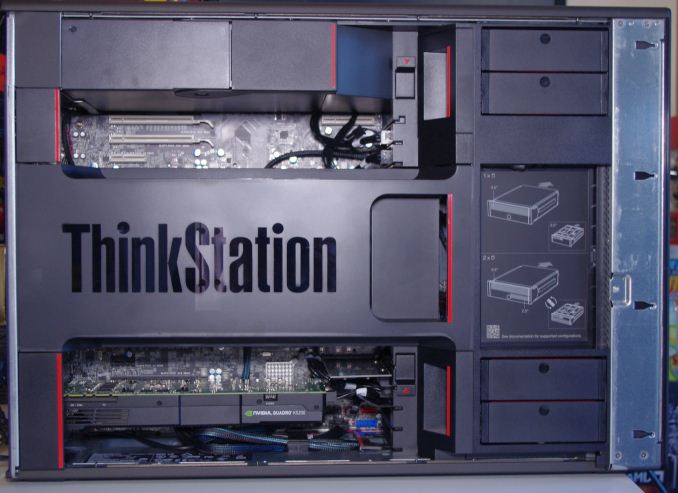
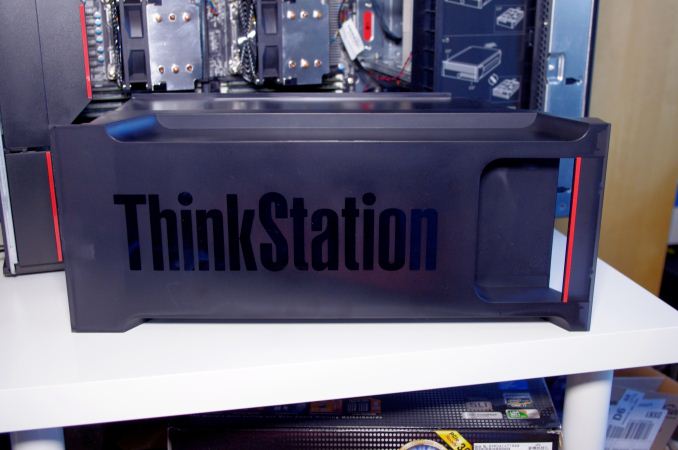
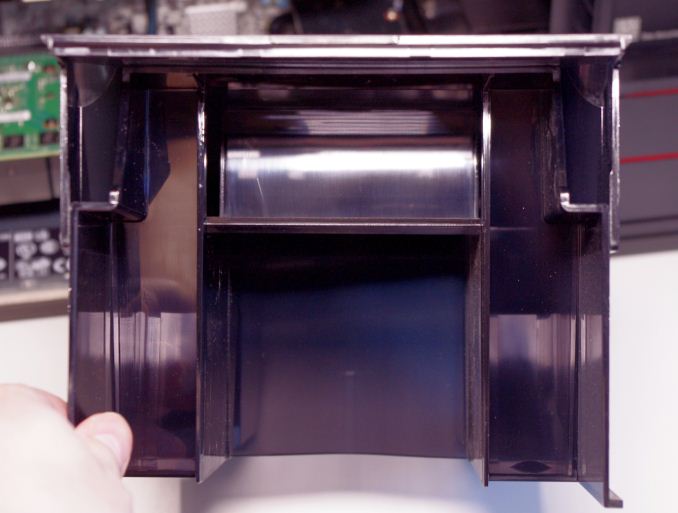
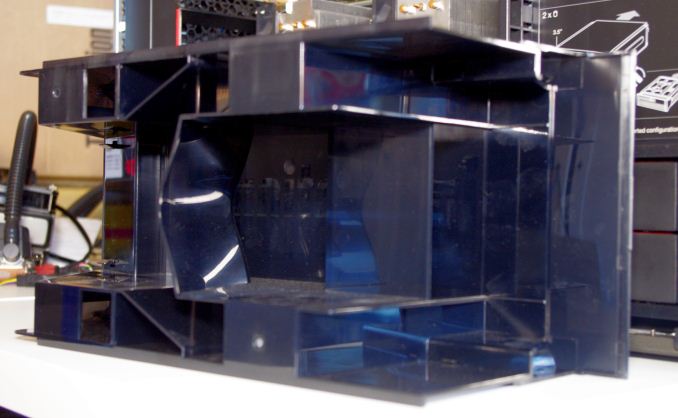
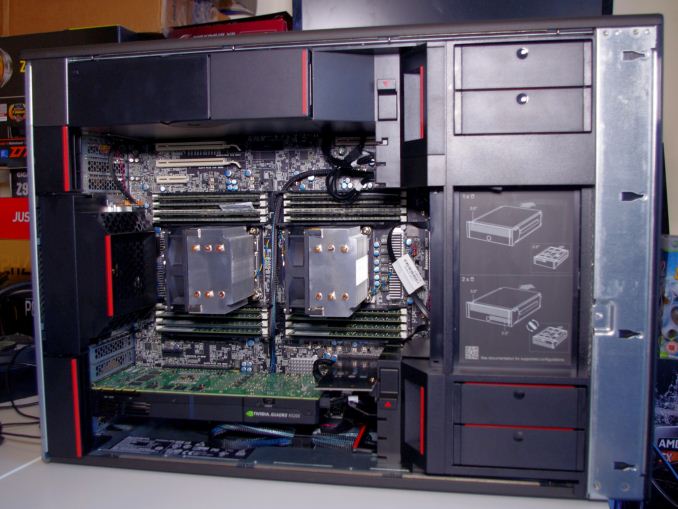
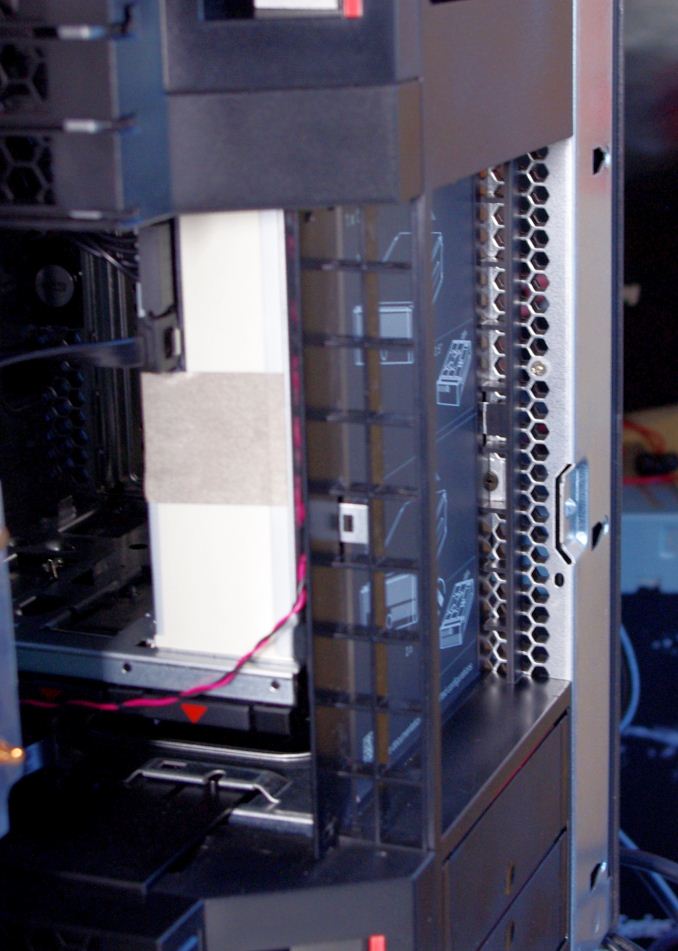
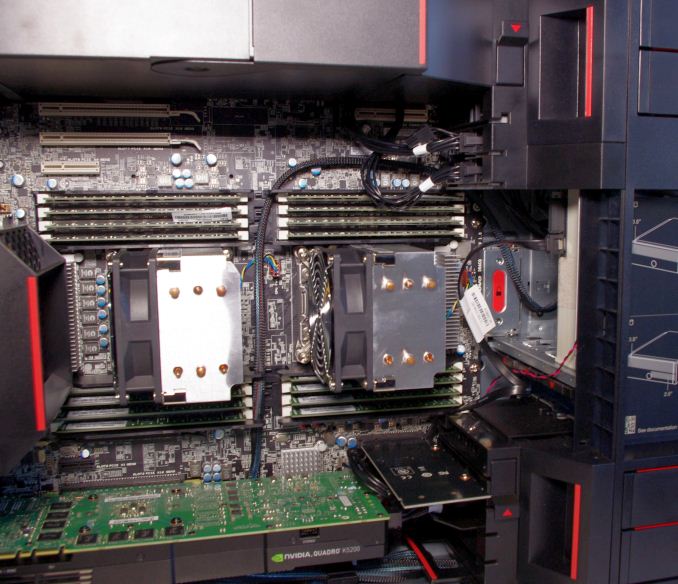
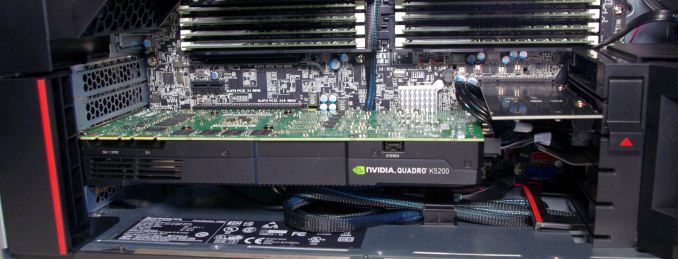

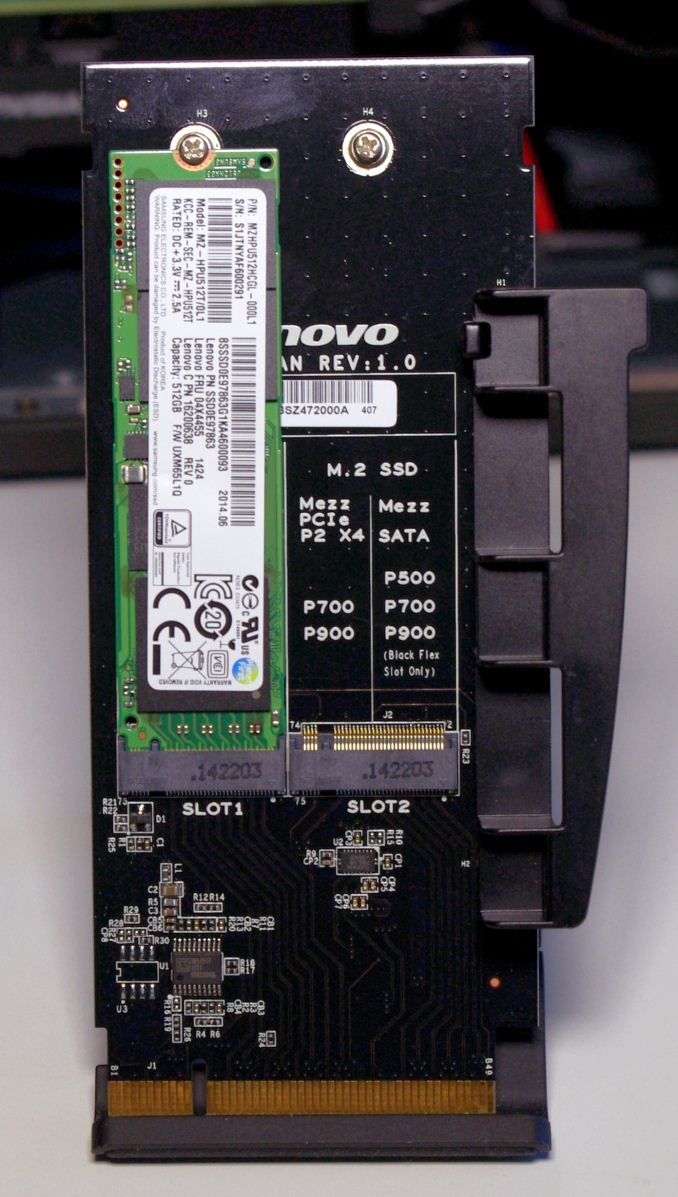

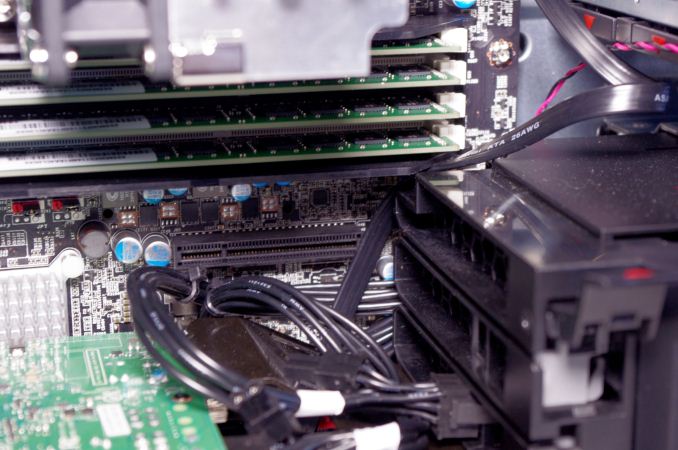
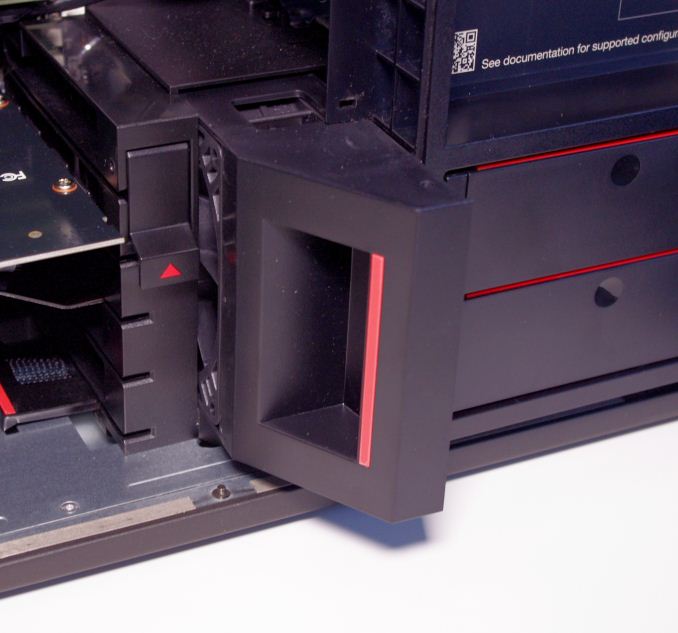
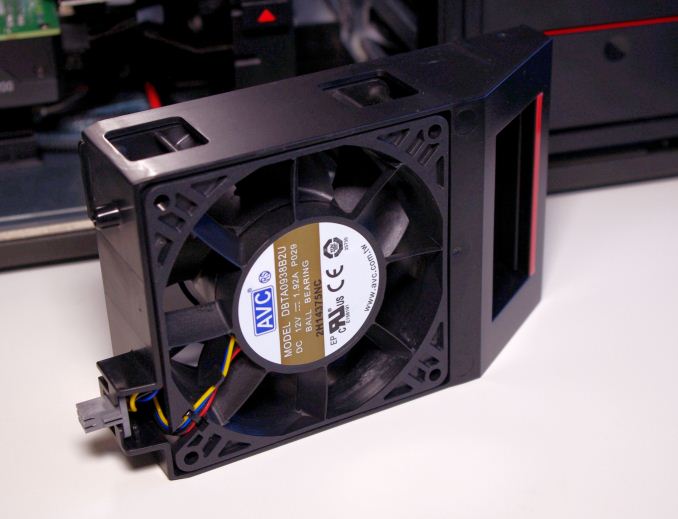
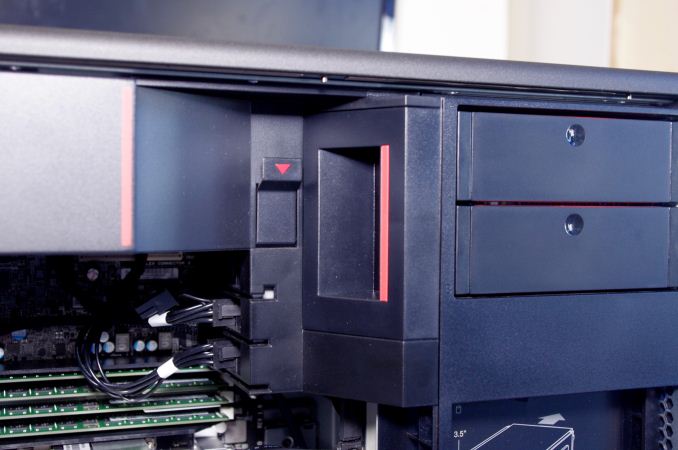
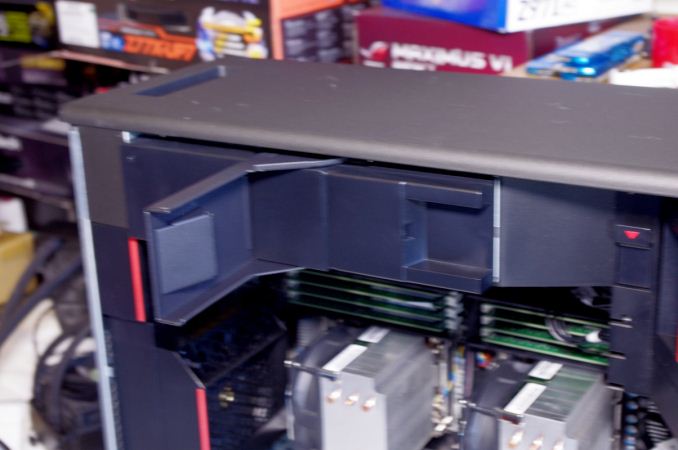
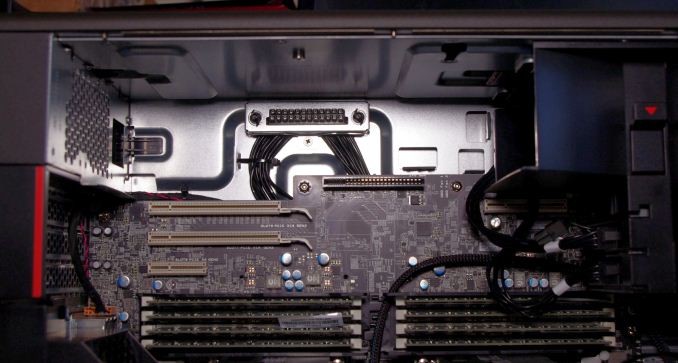
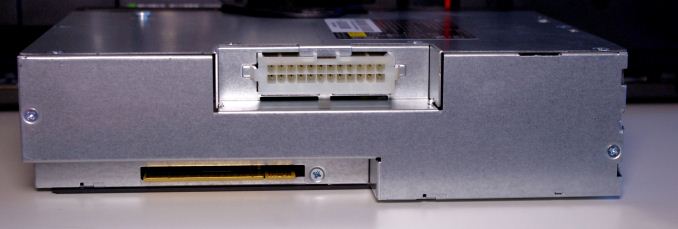
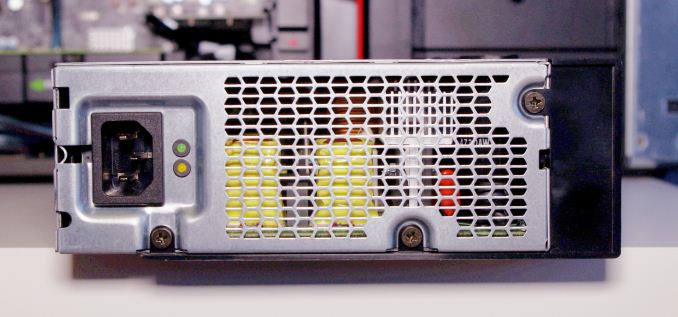
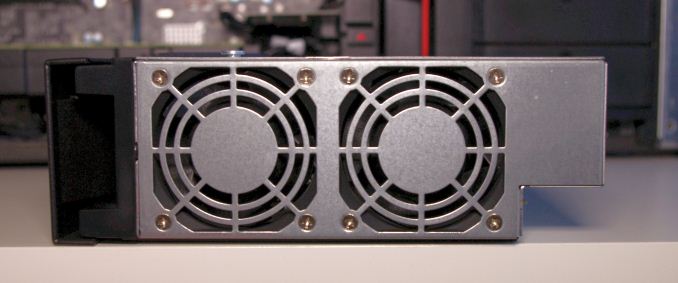
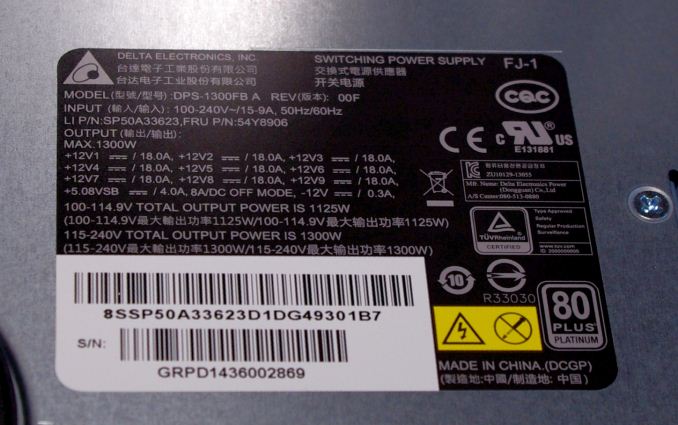
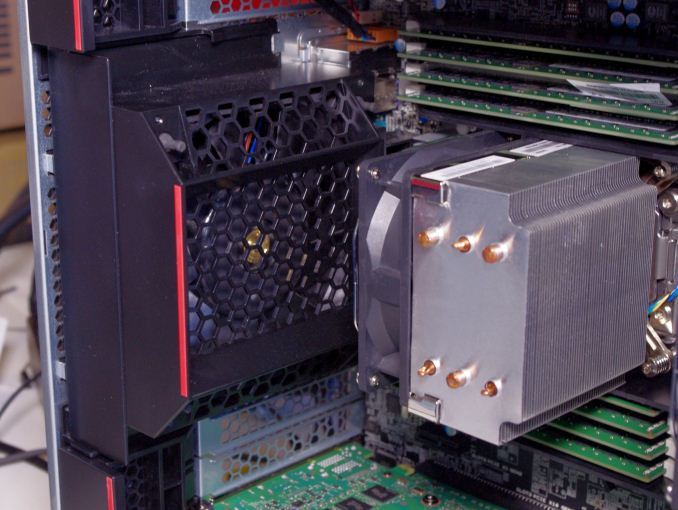
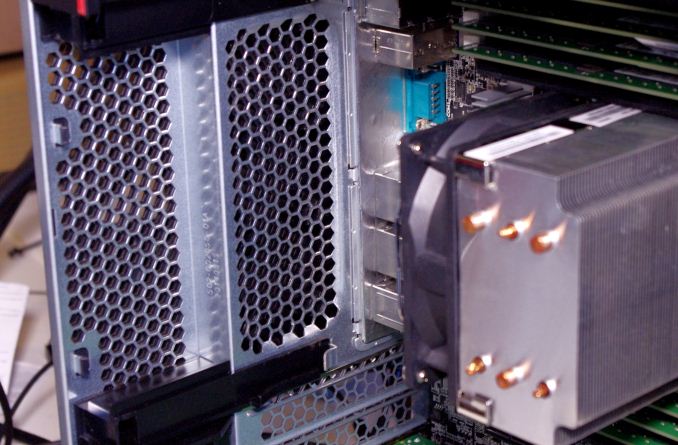
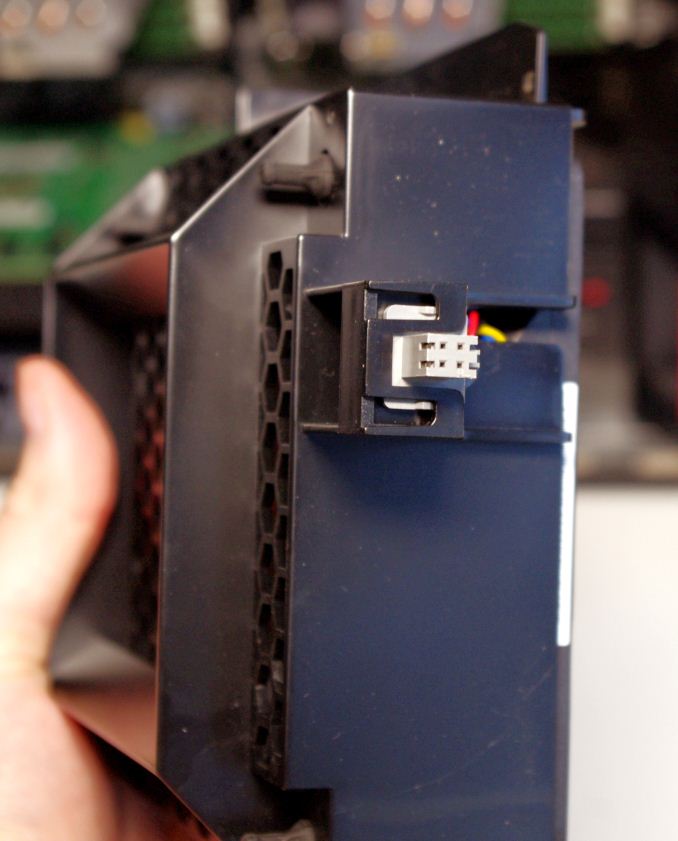
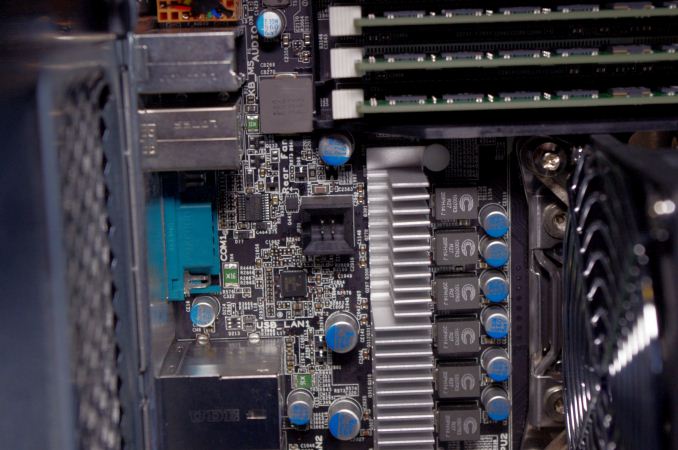

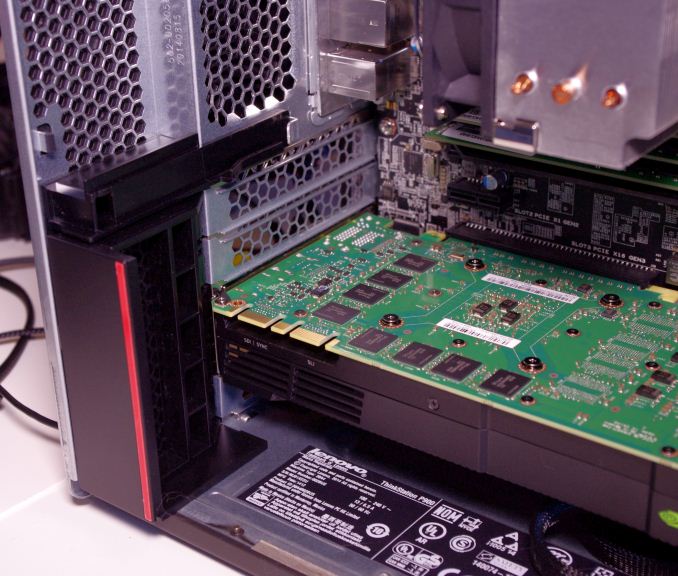
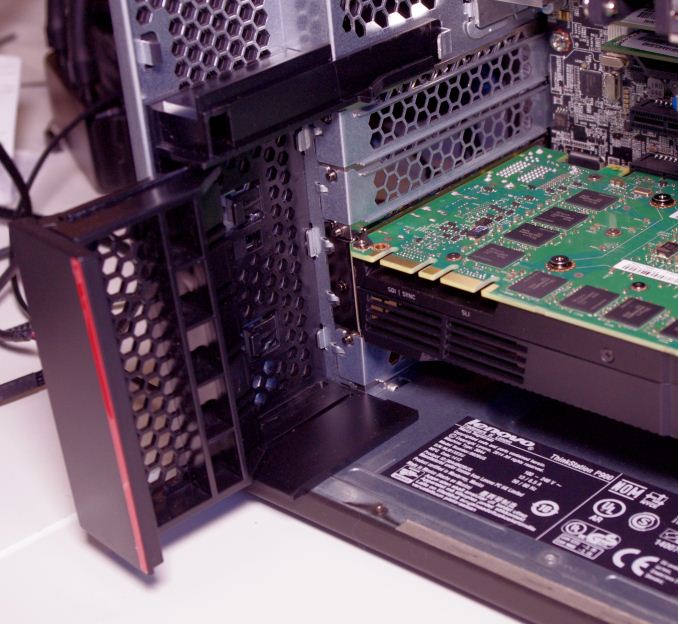
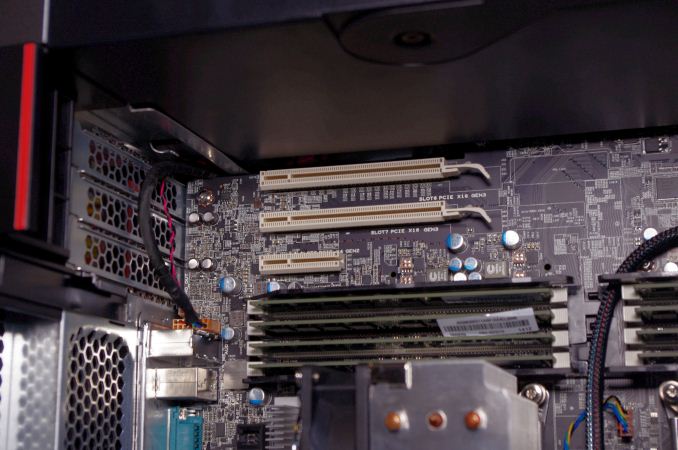

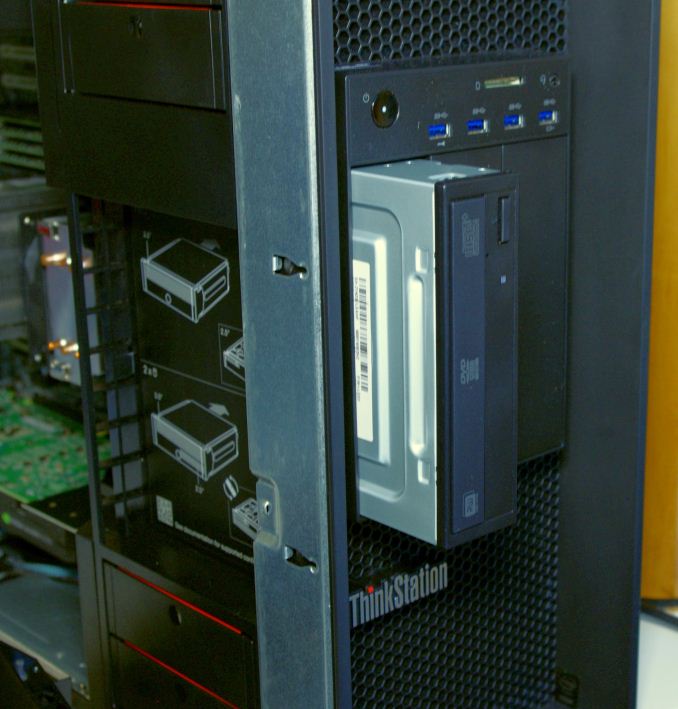
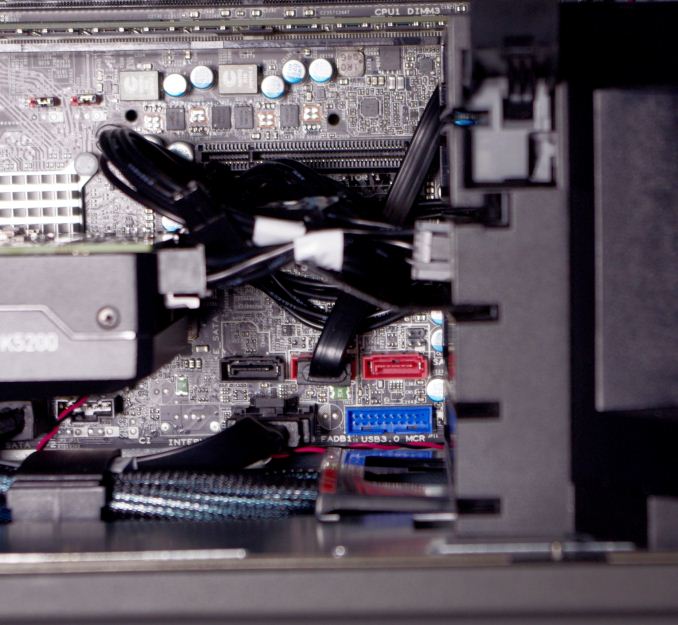

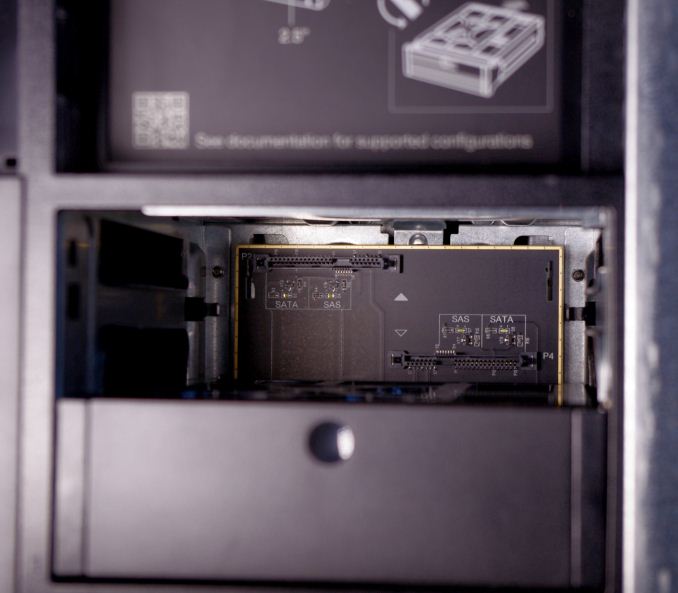
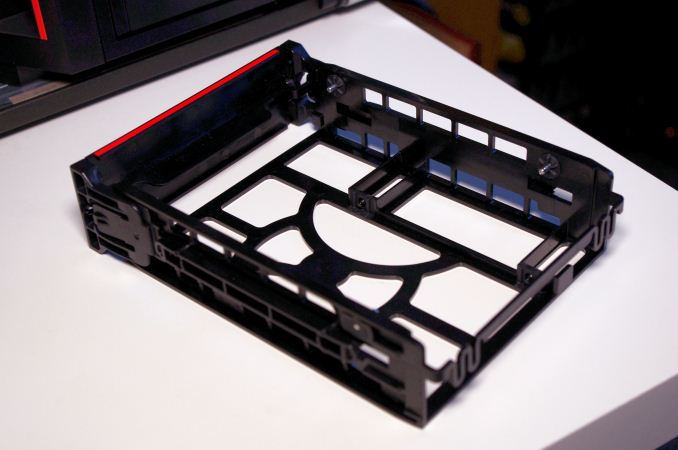

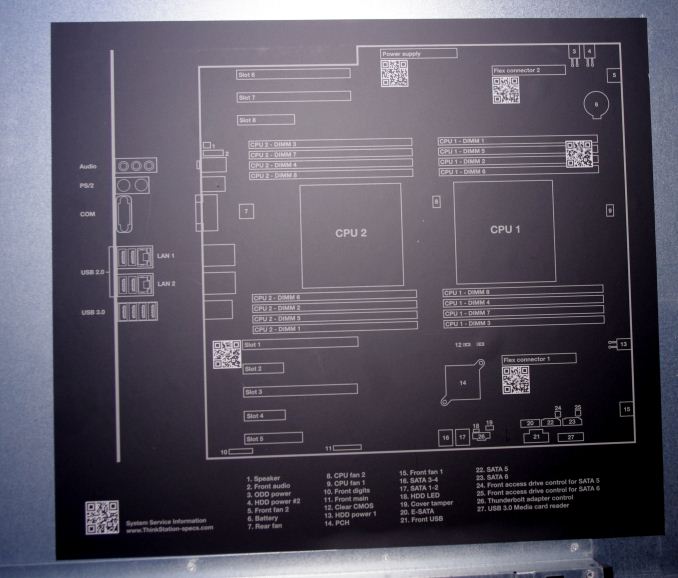







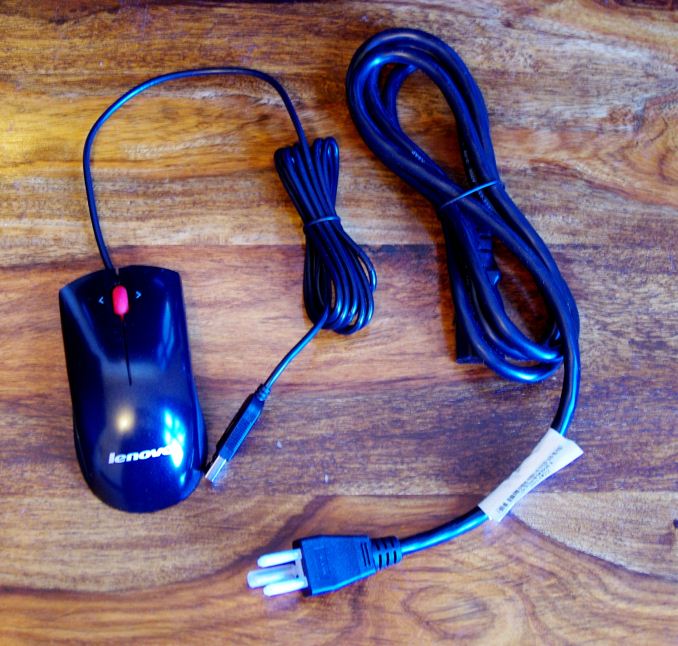
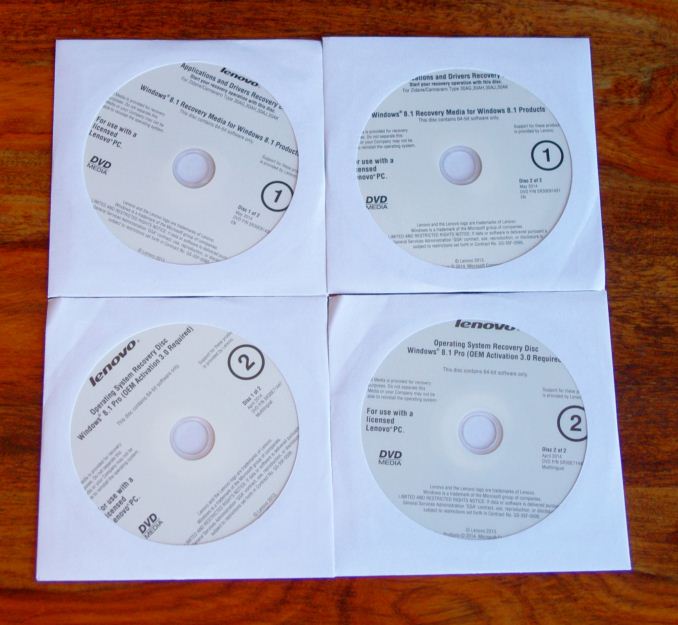








61 Comments
View All Comments
ectoplasmosis - Wednesday, May 6, 2015 - link
Yes, the photos in most articles have been atrocious for a while now.It's not expensive or difficult to get a lightbox and learn how to use a DSLR...
xype - Wednesday, May 6, 2015 - link
I see a seasonic ad that goes right up to the to the article’s text edge. It makes it really, really hard to read. Great design, there.Samus - Wednesday, May 6, 2015 - link
Review system at $16,797.60That gave me a chuckle ;)
Flunk - Wednesday, May 6, 2015 - link
Workstation or loaded Hyundai Accent, which is better value?ImSteevin - Thursday, May 14, 2015 - link
Like with any tool, it depends what you need to do!DanNeely - Wednesday, May 6, 2015 - link
I'm a bit curious about part of the PSU design. From the label on the PSU itself, and the ODD/HDD power connectors on the mobo diagram, it's appears that during normal use the 3.3/5v power is being made using DC-DC converters on the mobo. (I suppose they could be dual purposing the +5Vsb unit in the PSU for part of that, but would've expected it to be marked differently if so.) I'm wondering why they left the -12v module in the PSU instead of moving it to the mobo (next to the RS232 port) as well. Are circuits that can invert DC power significantly more expensive/less efficient than something that could be done while closer to the AC?aggiechase37 - Thursday, May 7, 2015 - link
Does it come pre-loaded with spyware like their lappies? Also, whatever their excuse for the price: vom. I can build this system myself for a tenth of the price.zodiacfml - Friday, May 8, 2015 - link
Design 101? They should have taken a page from Apple's Mac Pro. As an engineer, I love that design despite an Apple hater. It doesn't have to be cylindrical externally or as compact but to be efficient in design.dragonsqrrl - Saturday, May 9, 2015 - link
This workstation seems woefully overpriced for the specs. A similarly spec'd Dell Precision costs ~$10,500.akula2 - Sunday, May 10, 2015 - link
The recent X99 based workstations I've built are far more superior in terms of low TDP. performance and savings. E.g.,E5-2680 v3: 12 Cores -- 120W -- 30Mb cache. -- costs much less.
Considering the investment for each workstation, the most important point missed:
How safe is the data in this machine when running Windows 7 or 8? Highly unlikely.
Hence, I chose Linux because of various reasons. E.g., PRNG issue, thanks to Intel's 'RdRand' CPU instruction.